READ: The Healing Power of Hobbies
Ems Hancock shares her joyful doll’s house renovation and explores why this beloved hobby really is very good for our health.
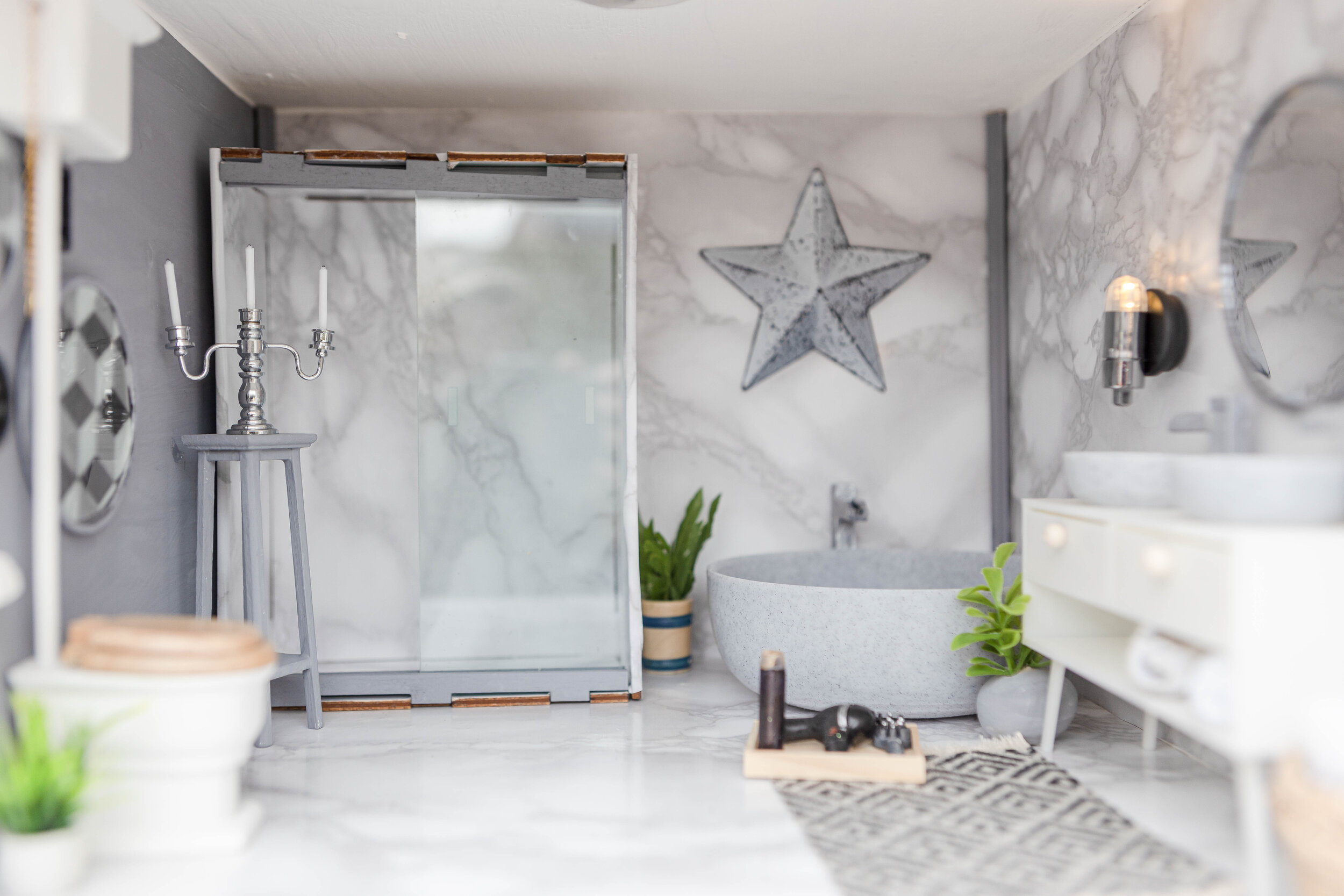
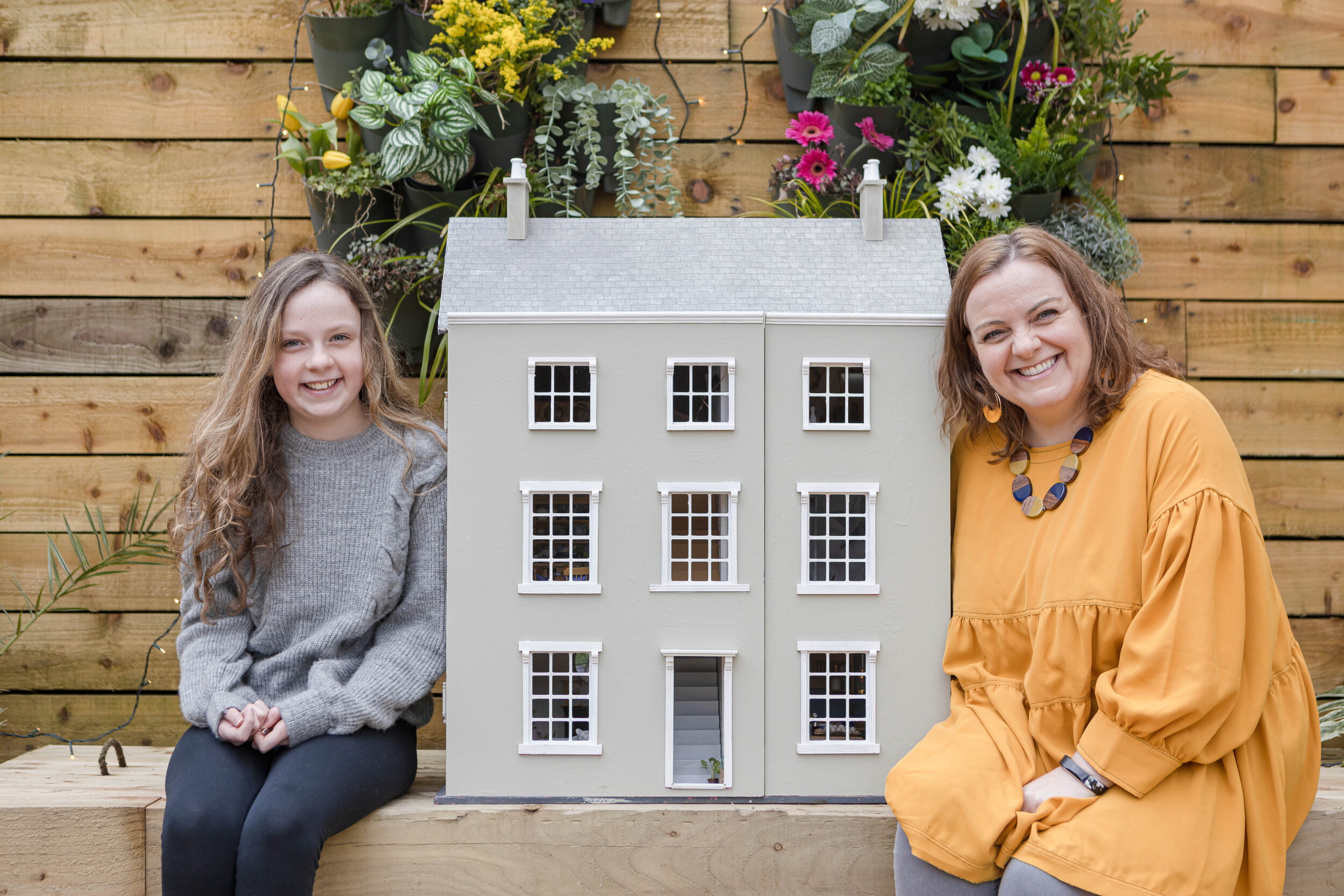
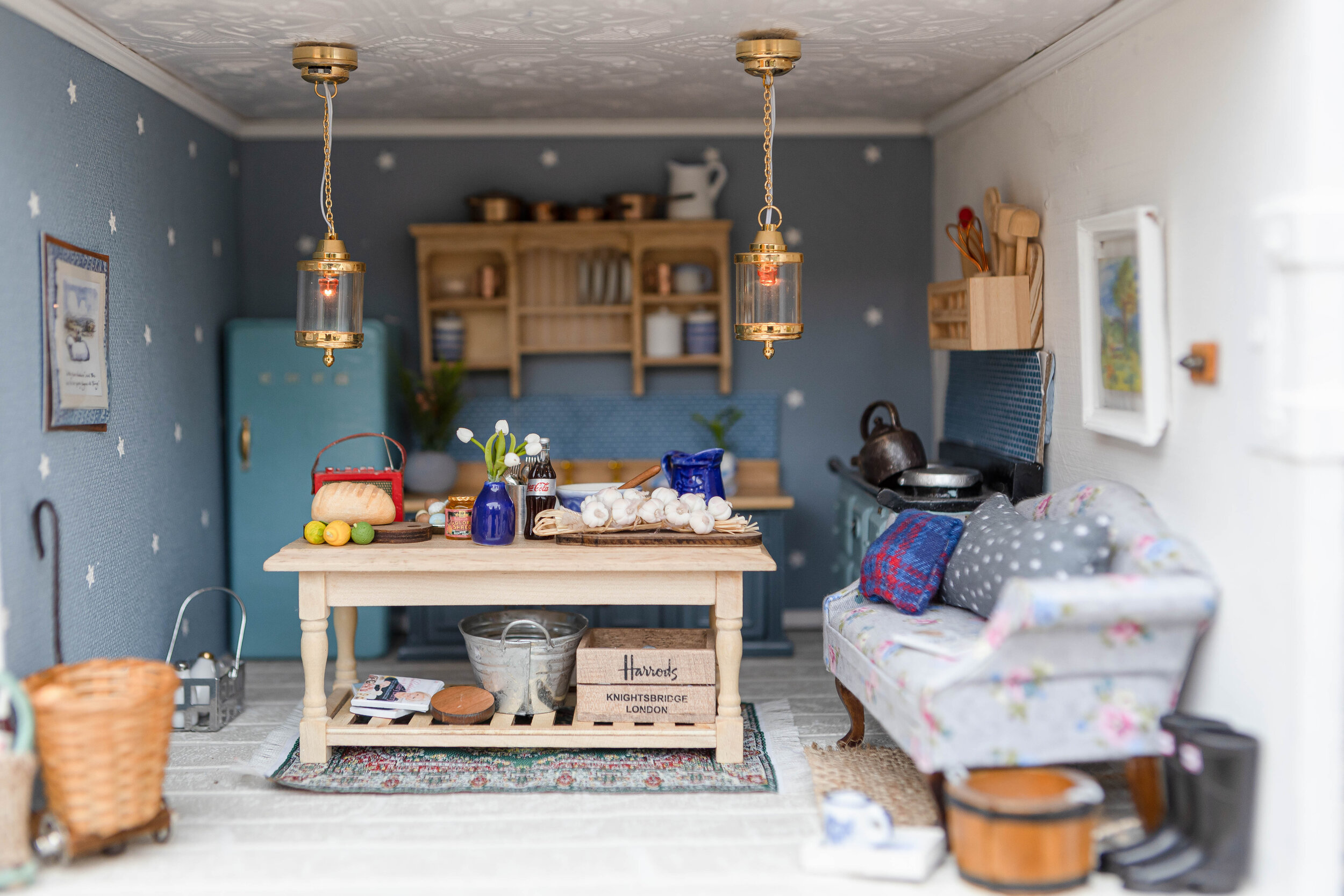
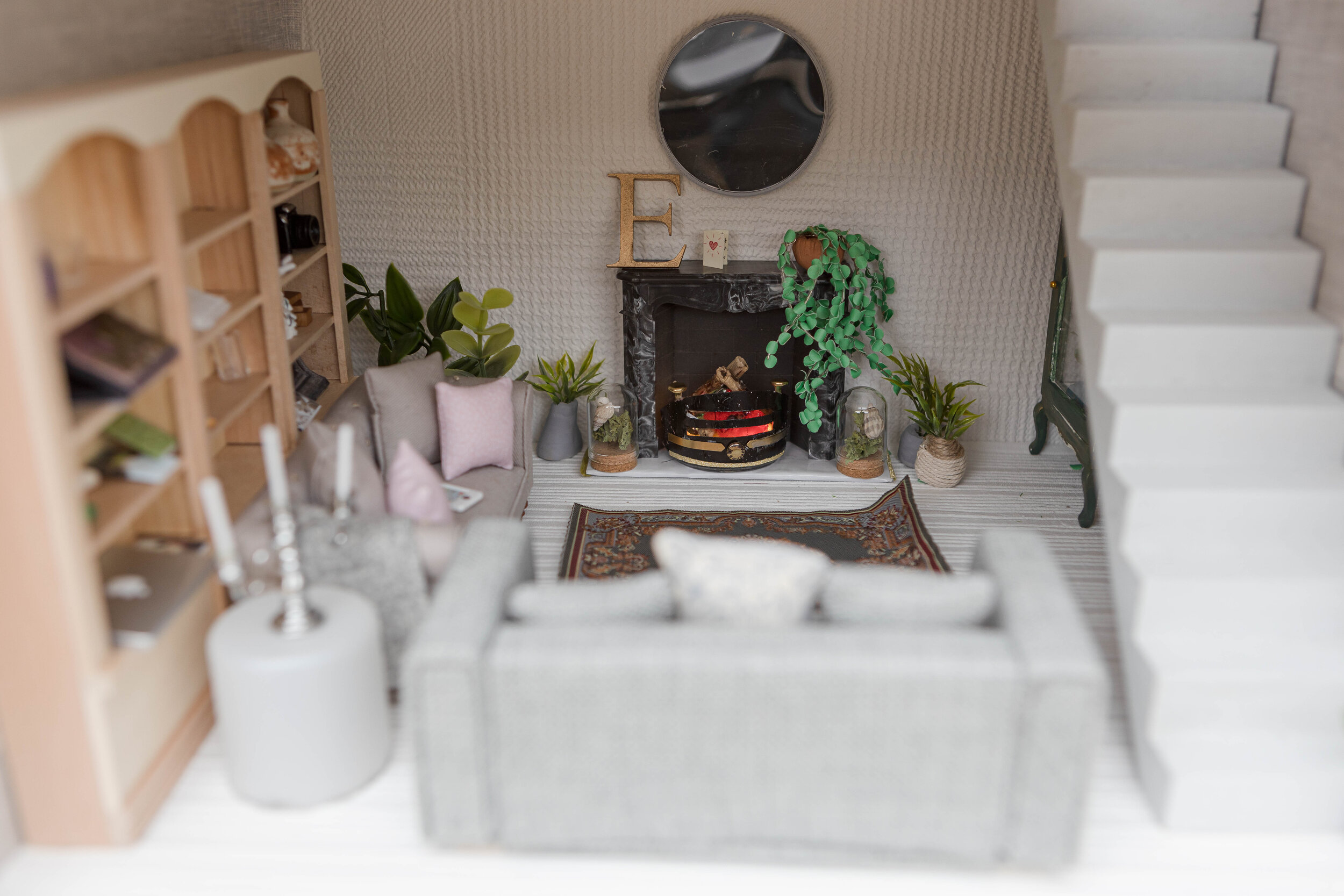
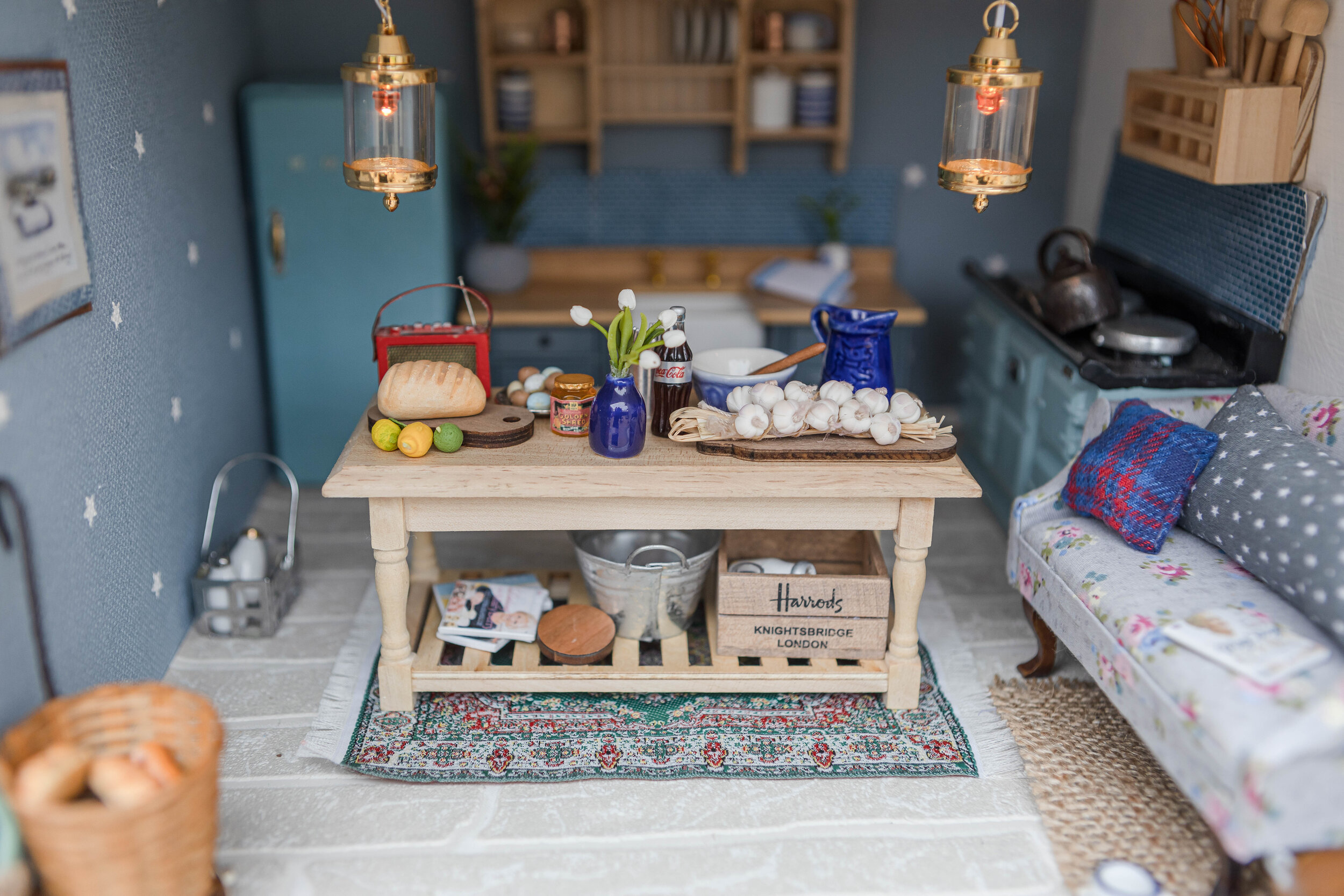
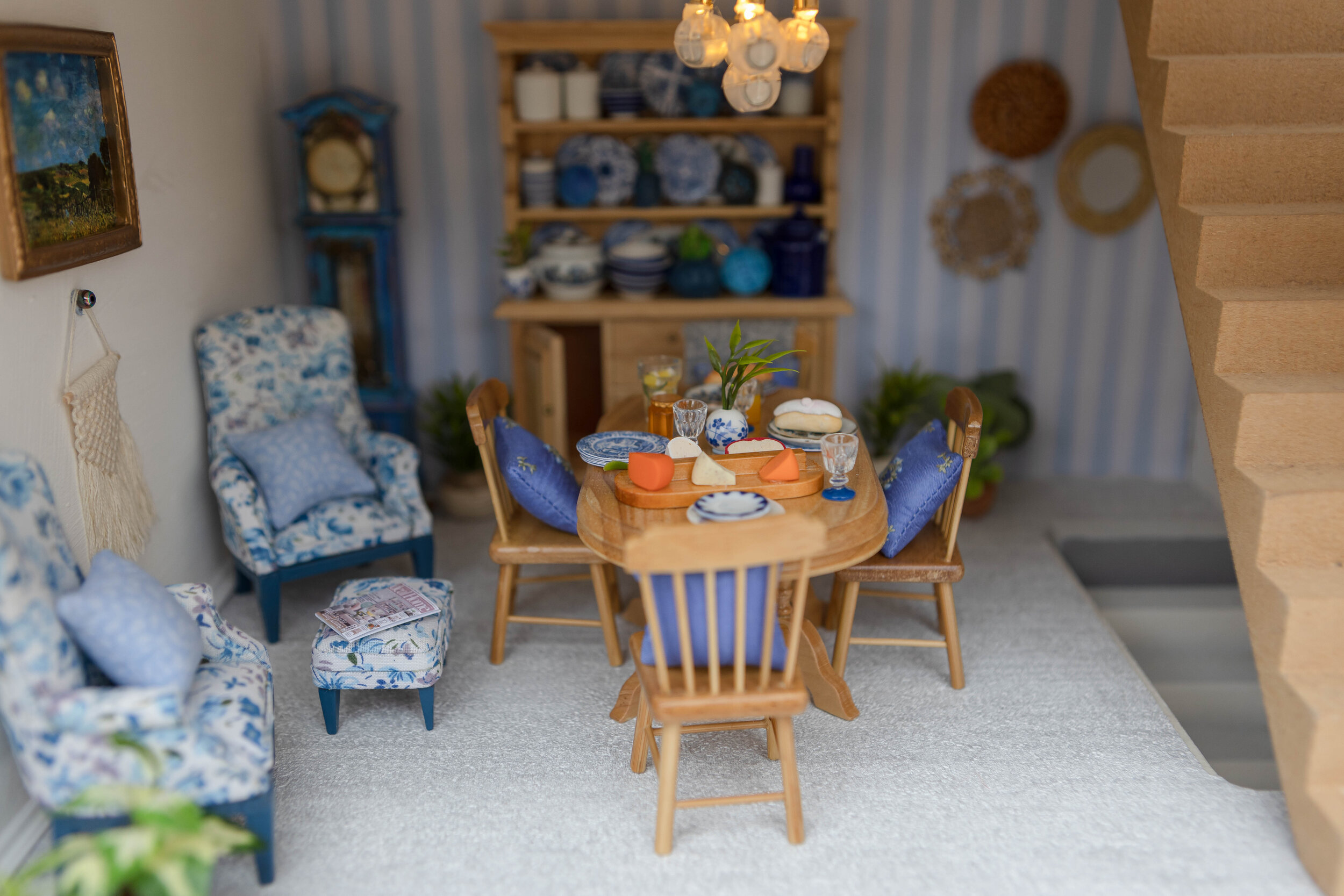
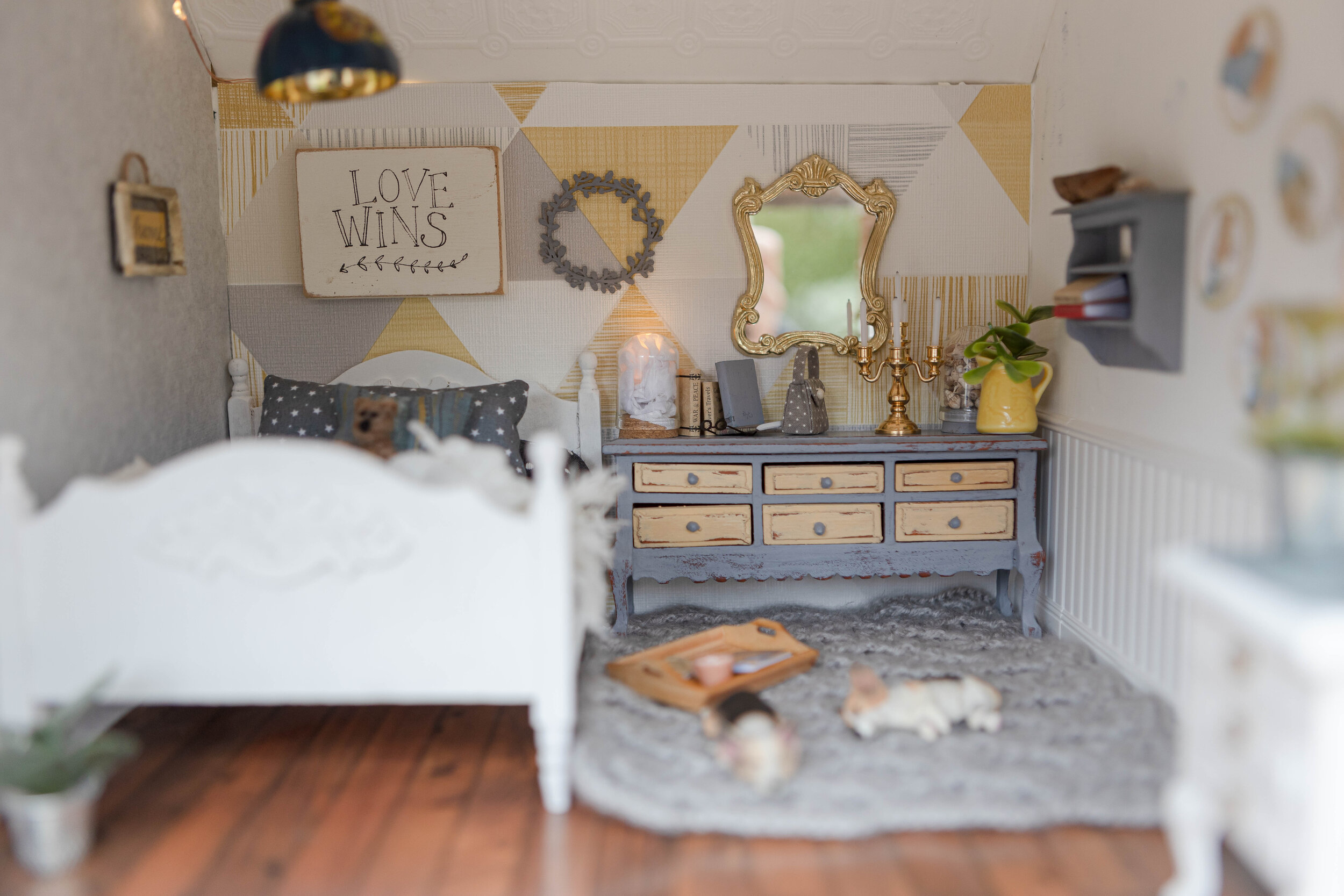
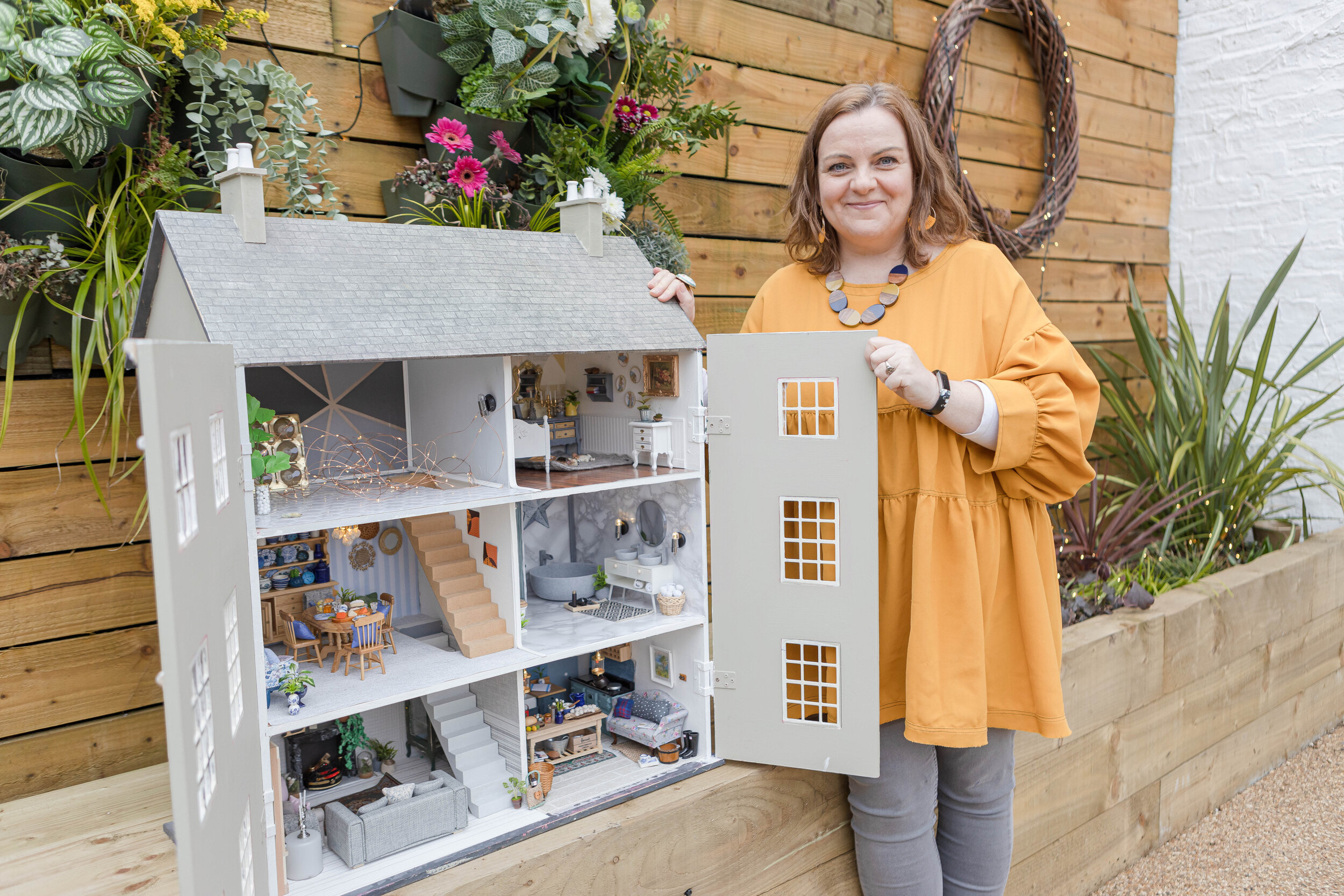
I was casually flicking through eBay, with half an eye on that lovely chateau programme on Channel 4, when I saw her. Advertised at a mere £75 English pounds she stood out like a thumb that looks wounded but tries hard to put a brave face on it. Six large rooms. Two chimneys, complete with 4 pots. Eight windows.
No door. (But one can’t be too greedy.)
My whole heart went out to her at once.
My four children and my husband were snuggled up next to me on various sofas in the lounge. We still had the Christmas lights on. It was the second week in January and the year hadn’t woken up yet. We knew another achingly long lockdown was on the cards.
Life
was
slow.
I decided I was 48 and probably didn’t NEED a miniature house. (Especially one without a door.)
But it kept calling to me. I screen-shotted the photograph of it and found myself secretly returning to look at it over the course of the evening. Scrolling back to the post, I discovered that it still hadn’t been sold. (Perhaps the door issue?) To be fair, the house was in disarray. The only poorly-lit photograph of the interior showed it to be “well-loved” and furnished with some kind of ancient checked paper flooring in one room. It also had what appeared to be stuck-on-fluffy carpet, in custard yellow, in another. But there was still this insistent little voice in my head.
So, I announced, as nonchalantly as I could, that I was going to buy a dolls house. For Esther. (Our daughter) And maybe me. But mainly Esther. She’s 11 and she needs a miniature house. Clearly. Yes. Somewhat surprised at my short monologue, my family turned to me, smiled and shrugged. I think my husband knew better than to try and argue. I had that look in my eye, (the purchasing one, reserved exclusively for eBay or, possibly Etsy, if I’m feeling excitable.) Eagerly, I pressed the lovely blue lozenge at the bottom of my phone screen that invited me to partake in the three delicious little words, “BUY IT NOW.”
The following day I drove much further than I wanted to go, (but that’s the fun of getting lost) to pick up the house. I had to collect it from a craft shop in a small village outside Manchester. The aforementioned shop was shut. This presented a number of immediate challenges. I don’t know if you’ve ever tried to collect a dolls house, that’s as big as a bath and the weight of a small cow, from a shop that is not actually open. I have. And it’s not that fun.
I banged on the door. Which was gated and barred.
No reply.
I rang the number from the seller on eBay. It was engaged.
Wigan in January isn’t the warmest place.
I was at a loss.
I was about to leave and drive home again in a huff when a sweet man wearing fingerless gloves and a bobble hat opened the door. He greeted me with a surprised kind of grunt. I looked past him and there she was on the floor! My new miniature, (yet somehow massive) beautiful and decrepit house. I couldn’t believe how much I fell in love with her as soon as I saw her. Huge, resplendent and so in need of love and care, like a puppy at a pound with ’please take me home and love me and give me a new door’ eyes.
I suddenly regretted parking half a mile away.
From the second my teenage son manhandled her into the house, I knew I had my work cut out. Mustard-coloured-stuck-on-fluff met me in almost every room, except the one with bruise-coloured-mauve fuzz - and the one with the time-worn check. But. She. Was. Gorgeous!
Our Name
Esther and I decided, to call her Wentworth Place. As a huge fan of Jane Austen, the character Captain Wentworth in her novel, ‘Persuasion’, had always struck me as a decent chap.
Captain Wentworth was not a typical hero. Unlike many gentlemen of the day, he made his own fortune through hard work and good sense, being a naval officer at sea. Without land, titles, or high birth, Wentworth was not the traditional match for a female of Anne Elliot’s position. But his personal qualities were enough to surmount the divide.
I thought that Wentworth Place probably wouldn’t be a typical traditional Georgian house, (especially with an 11- year -old and a 48- year- old in partnership) but with hard work and good sense, she would arrive on the scene and announce herself gently, as ‘worthy'.
Wentworth it was.
The Reno
And so, I began the task of ridding her of the clues left by previous owners. The excitingly incoherent floor surfaces were most unyielding and spent days fighting me. They appeared to be stuck to the surface with some kind of super-strength death glue. It took an industrial sander, a few knives and a lot of calming jazz music to clear those special floors. The process of also ridding Wentworth Place of her exotically-placed stickers, (left by an experimental child) was nothing short of liberating. I wondered why I was starting to feel so… well… satisfied and happy.
In my day job, I (normally) work as a mental wellbeing coach in schools and business settings and I also write self-help books, from a faith perspective.
I know the healing nature of hobbies and have written about it a number of times. (Most specifically in a book called “The Rest of your Life.” (River Publishing, 2018) about our spiritual need to take time out.
I have known for years that hobbies strengthen the mind and can even protect us from negative thinking. But I don’t think I have EVER experienced their warm embrace, so much like an unexpected kiss, before. The more I worked on this darling house with Esther, the happier I felt. Previous to us owning Wentworth, I was ok. Bumbling along. Feeling fairly flat but not actually sad, or low.
But after we got her, I felt an overflowing, bubbling joy.
Being with Esther and talking about the interiors and what we hoped each room would look like, was absorbing and fun. It was an inducement to stop and take time for ourselves.
It was PERMISSION TO PLAY.
For me, as a busy mum of 4, it helped me take a break from the responsibility, stress and real-world problems of my (allegedly) grown-up brain. I relished the chance to shrink into this environment and felt my mind begin to declutter itself.
As part of the house, I thought it would be fun to start a little account on Instagram, mainly to document our journey and help us navigate some of the processes. Suddenly, overnight, I was aware of this whole army of people who were skilled beyond my wildest imagination. They talked about things totally alien to me, questioning one another about “Cricuts” and “1:12th scale” and ‘tacky wax.” I was clueless and genuinely wondering why everyone was spelling the word ‘circuit’ wrong.
I dived in deeper and discovered people who made diminutive doughnuts, small spoons, tiny tables, undersized umbrellas, petite pillows and minute medicine bottles. These were the casual makers of trout, jelly cupboards and Tudor monasteries. They woke up each day and made something intricate and teeny, sometimes from the strangest items, often just for the sheer fun of it. It was beguiling. And I wanted IN.
I began to walk the streets, picking up litter and imagining its different uses in our mini home. One day, whilst trudging along the canal, I stumbled upon half an old bicycle bell and was so delighted at how much it looked like a 1950’s ceiling pendant, that I said it out loud. And I mean loud. A family walking past just stared at me in alarm and hurried their children by, as though I was “slightly unhinged.”
“Esther!” I shouted breathlessly one day from the top of the stairs. “There is a man on Instagram who makes miniature theatres and they look like just REAL theatres. Come and see!” Obediently, Esther sat down and immersed herself in the pages I was reviewing. A little smile crept onto her face and she turned to me, gleefully.
“We need a swimming pool Mummy!” She said.
I agreed. Heartily.
She understood.
Wentworth Place was not a house that made sense. It wasn’t ever going to be a genre or a style. It was all about things we couldn’t have in real life. We spent the next few days researching dollhouse pools. We learnt how to make one ourselves using only cereal packets, a hair net and some left-over coat hangers. But then we decided against it. We nearly imported one from Sweden until we realised it was in the wrong scale. (We were learning. We found out that we could print one in 3D, if only we had, or indeed knew how to use, a 3D printer.
Miniatures opened our horizons and allowed us to think totally new thoughts. I found myself lying awake at night contemplating how to make swimming pool tiles from cork placemats and wondering if I could somehow have REAL water.
One day, I turned some toothbrush fronds and a Q tip into a cactus (triumphant) and tried to make some pussy willow into a gerbil (unsuccessful.) And I never thought I would say either of those phrases or be captivated by either such task.
Being in this wonderful space has taught us to try new skills and techniques. I've accidentally learnt how to make acorn cups look like ceramics. And how to age modern furniture to look like it's been left in a dank garage and accidentally been hit by a misplaced piano. Miniature things have impacted a lot of areas of my life. They have boosted my self-esteem by helping me to create something beautiful each day. But most importantly of all it has introduced us both to a new, loyal and loving community. I have adored that our mini adventure has allowed us to collaborate with others in all sorts of countries across the world. We now have friends in Canada, Australia, France, Sweden, America… just because we chose to buy this little home.
Kindness is everywhere in the mini world. Total strangers have sent me things to help me out. People have made me items and refused to be paid for them. Others have offered wise advice when I have sought their help. It has genuinely been a uniquely wondrous experience that sometimes made me cry with gratitude. My son summed it up the other day. “If you’ve got time to make a miniature trifle, you are probably pretty kind.” FACT.
Many adults that I work with don’t feel they have time for a hobby. Stretched and stressed, they just about make it to the end of the day and self-soothe with a bit of Netflix. But I am realising more and more that dabbling with hobbies may just enhance our lives in ways we haven’t imagined possible.
In Tinker Dabble, Doodle, Try: Unlock the power of the Unfocused Mind” (Ballantine books 2017) we see that hobbies may help us become more successful. There have been endless studies done into how pastimes strengthen brain activity. Look it up. It’s an actual thing! Hobbies that involve visual thinking, planning and imagining (learning from doing something, rather than just reading, or thinking about it) are particularly brilliant for us. Did you know that engaging in your hobby for one, or more hours a day, protects you against dementia in later life? And is even proven to help lower blood pressure. Hobbies can improve the way the mind and heart function too. So, in short, hobbies like minis are actually healing. Not just mentally but physically too.
Having Wentworth Place has been beautiful THERAPY. I’m having great fun with Esther. We hang out more. AND we have a pretty impressive swimming pool.
(At the time of writing, Wentworth Place was still without a door.)
Ems Hancock is a mental health coach in schools and businesses. You can find her books on Amazon and follow her on Instagram at @wentworthplace

